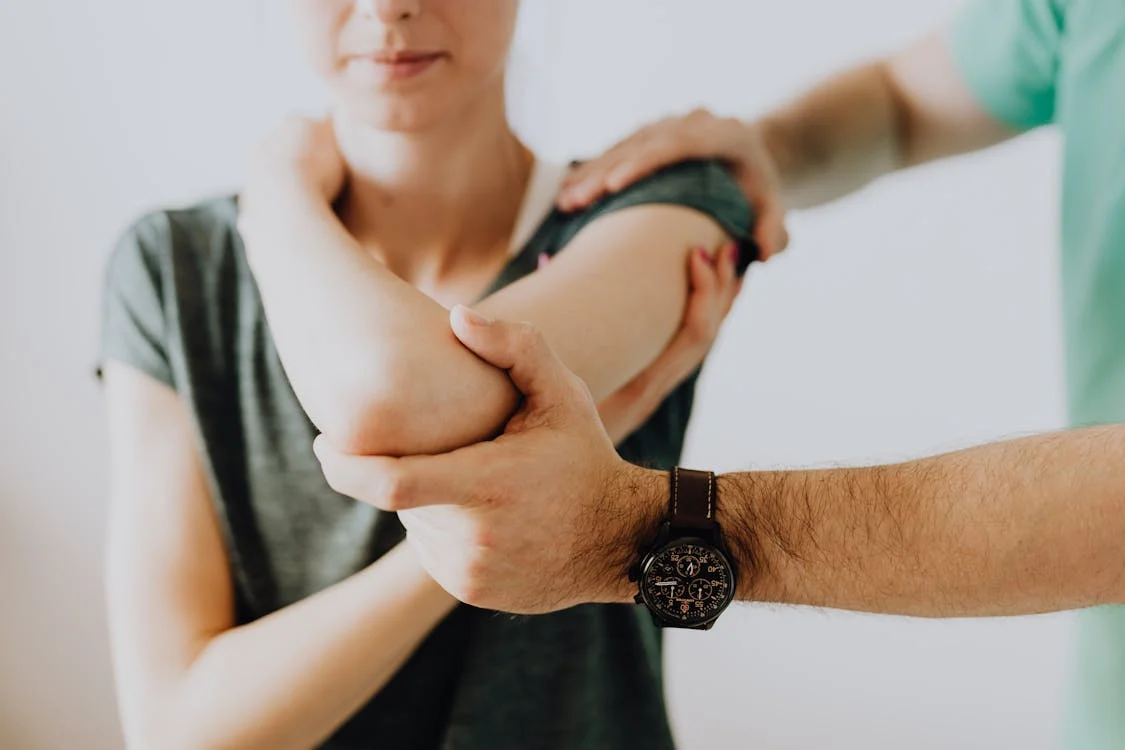Pain Management in Broward County, FL
Relief from stubborn
chronic pain, finally
As our valued patient, we’ll guide you through a comprehensive diagnosis and treatment plan that empowers you to take back control of your life. Don’t just mask your pain – let us help you treat it at its root and experience true relief.
Conditions Treated
Learn more about the conditions that we treat and our non-surgical, long term pain relief solutions.
Request Appointment
We proudly serve all of South Florida. Book a consultation with our physicians today.
Our team of caring specialists improves the lives of people with spinal and sports conditions.
Florida Spine Care provides customized treatment programs to return you to your active life quickly and safely. Our highly skilled, multidisciplinary team includes doctors dedicated to non-surgical approaches, surgeons specializing in advanced minimally invasive procedures with the best history of successful outcomes, on-site physical therapists, a team of medical support people who provide the best of compassionate care, and a terrific administrative staff to help you navigate the complexities of insurance coverage.
Our state of the art, 17,000 square foot facility is fully dedicated to spinal and sports care. Our leading edge technology means you get the best medical treatment possible, but it’s our entire team’s dedication to patient outcomes that sets us apart.
At Florida Spine Care, you are not a patient, you’re a person we care about. Our focus on quality care, from evaluation through the treatment program and beyond, will provide you with the best treatment possible and the best healthcare experience.
Why Florida Spine Care?
Reputation
At Florida Spine Care, our mission is to provide the most advanced and compassionate care to patients in pain.
Experience
We have 30+ years of experience dedicated to finding long term relief for individuals living with pain associated with accidents, surgery and chronic conditions.
#1 Choice
We’re a caring staff of specialists who will work with you, explain the procedures, and answer your questions.

Our Interventional Pain Experts
What Makes Us Different
Spine Care
- Fellowship-trained physicians
- 17,000 sq. ft. specialized facility
- Non-surgical and surgical care customized to your needs
- South Florida’s dedicated full-service spinal and sports care organization
- On-premises lab
- State of the art digital imaging system and electronic medical records (EMR) system
- Experts in minimally invasive spine care
Sports Care
- Subspeciality certified in Sports Medicine
- Extensive expertise in the care of athletes and in sports medicine
- Board-certified American Academy of Orthopedic Surgeons
- New anesthetic techniques for pain management without reliance on opioids
- Leader in minimally invasive procedures
- Advanced expertise in adolescent ACL reconstruction
- Advanced physical therapy
Patient Resources

To learn more about your condition, please visit our extensive, easy to use Patient Education Center. Each condition is presented in an informative video animation to help you to understand the nature of the condition and your treatment options.
The Education Center provides an overview, but we encourage you to make an appointment to speak directly with a doctor about the treatment options that address your unique circumstances. At Florida Spine Care, we customize our care program to your needs.
Quick Treatment Resources
Cervical Disc Herniation
The neck, or cervical spine is made up of 7 bones, or vertebrae. These bones are separated from each other by a specialized cartilage cushion called an intervertebral disc. As we age, the tough outer ring of the discs can become weaker allowing the soft jelly like center to “squirt out”, or herniate. Herniated discs can put pressure on the spinal cord or nerve roots that pass close by. Herniated discs are also referred to as slipped discs, ruptured discs, protruding discs, or bulging discs.
In the cervical spine, a herniated disk can irritate the spinal cord or nearby nerve roots and result in neck, arm, or shoulder pain, numbness, or weakness in the arm or hand. Occasionally, large disc herniations can even cause some strange symptoms like problems with balance, difficulty controlling one’s bowels or bladder, and changes in dexterity of the hand (this can cause changes in handwriting, problems buttoning one’s shirt, or difficulty finding one’s keys in a pocket or purse.
Cervical Stenosis
The neck, or cervical spine, is made up of 7 bones (vertebrae). These bones are separated from each other by a specialized cartilage cushion called an intervertebral disc. As we age, the discs begin to “wear out”, causing them to flatten out like a pancake. When this occurs, the space available for the nerve roots is narrowed, and can cause neck, arm, or shoulder pain, and numbness or weakness in the arm or hand (radiculopathy). Occasionally, the narrowing is so significant that the spinal cord is compressed – this is called myelopathy.
Cervical stenosis is not uncommon. Fortunately, many times the symptoms are tolerable, and sometimes, it doesn’t cause pain at all. Additionally, cervical stenosis is often effectively treated with nonsurgical modalities. However, if surgery is indicated, the vast majority of patients obtain good or excellent outcomes.
The physicians and surgeons at Florida Spine Care are experts in treating cervical stenosis. Our priority is providing the best care for our patients, and treatment plans are tailored to each individual’s specific problems and needs.
Compression Fracture
A vertebral compression fracture refers to a break of the vertebral body of the Thoracic spine (upper back) or Lumbar spine (lower back), and is most commonly caused by weakened bone due to osteoporosis. Most compression fractures result in a loss of more than 20% of the height of the vertebra.
Compression fractures can occur in the course of normal physical activities, without significant accident or injury. When the fracture occurs there is usually a sudden onset of severe back pain.
Compression fractures increases the risk of future vertebral compression fractures at adjacent levels, which can cause significant height loss, spinal deformity (kyphosis, or hunchback).
Lumbar Disc Herniation
The lower back, or lumbar spine is made up of 5 bones, or vertebrae. These bones are separated from each other by a specialized cartilage cushion called an intervertebral disc. As we age, the tough outer ring of the discs can become weaker allowing the soft jelly like center to “squirt out”, or herniate. Herniated discs can put pressure on the spinal nerves that pass close by. Herniated discs are often called slipped discs, ruptured discs, protruding discs, or bulging discs.
In the lumbar spine, a herniated disk can irritate nearby nerves and result in pain, numbness, or even weakness in the leg or foot. On the other hand, most people with herniated discs experience no symptoms whatsoever. When people do have symptoms, the vast majority of their symptoms will improve with time, and do not require surgery.
Minimally Invasive Spine Surgery
Traditionally, spinal surgery has involved large incisions down the middle of the back and the spreading (retracting) of the back muscles to gain access to the spine. This is referred to as “open” spine surgery. Open techniques provide the surgeon with easy access to the spinal anatomy. The downside of “open” spine surgery is that the muscle retraction damages the spinal muscles and can cause significant post-operative pain. In addition, “open” surgery can result in increased blood loss, larger scars and relatively long recovery times.
In many situations “open” techniques are still preferred, but recently, more and more conditions are being surgically treated using new techniques called minimally invasive spine surgery.
Minimally invasive spine surgery allows the surgeon to make smaller incisions in the skin and avoid large muscle retraction. The surgeon uses a microscope, small instruments, and tubular retractors to perform the surgical procedure.
Spondylolisthesis
Spondylolisthesis is a condition of the spine in which one vertebral body has slipped forwards or backwards on the vertebral body below. There are several different types of spondylolisthesis. Sometimes the slip is caused by abnormalities of the bone – this type of slip often causes problems during childhood or young adulthood. More commonly, the slip is a result of a degenerative process that occurs as we age.
Often, the slip doesn’t cause problems until there is a narrowing of the space available for the nerve roots, resulting in a condition known as spinal stenosis. Spinal stenosis causes back pain and/or leg pain, and limits the ability to walk. Treatment for spondylolisthesis is based on the severity of the patient’s symptoms, as well as the degree and extent of slippage.
Sports Treatment Resources
Knee Cartilage Injury
Knee cartilage injury is the most common injury to knee ligaments and menisci.
Cartilage is a tough, smooth tissue covering the end of a long bone and helps to cushion and connect joints. Knee cartilage injuries are usually caused by a blow or sudden stop.
Knee cartilage injuries can lead to pain, swelling, inability to walk or bend your leg, and instability in your knee joint. If left untreated, you could lose all the articular cartilage on one side of your knee.
Knee Ligament Reconstruction (ACL)
The anterior cruciate ligament (ACL) is one of the four major ligaments of the knee. It is located in the center of the knee and helps keep your knee from rotating or sliding out to the side.
Injuries to this ligament can be devastating for athletes who depend on their knees to play a sport. Injuries can range from a simple sprain to a complete tear, which may require surgery.
Athletes who have an ACL injury should consider non-surgical treatment first because it has been shown to be just as effective in returning athletes back to their sport as surgical repair, with reduced risk for infection and complications.
Post-operative Pain Management
Post-operative pain management is the process of reducing pain after a surgical procedure. Post-operative pain management aims to make the patient comfortable and prevent or minimize the likelihood of developing chronic constipation due to opioid use.
Post-operative pain management often includes two components: analgesics, which are drugs that relieve pain, and anti-emetics, which are drugs that reduce vomiting.
Traditionally, opioids have been used as a first-line treatment for post-operative pain; however, alternative therapies such as sodium oxybate have been found to be effective alternatives in recent years.
Explore Our Recent Blog Posts
FAQs About Pain Management in Boca Raton & Tamarac, FL
How do I know if my pain is acute or chronic?
Acute pain is defined as pain that occurs suddenly and lasts for less than six months. It alerts your body that it is in danger and that its health has been jeopardized. Chronic pain lasts more than six months and might persist even after the injury or sickness has been treated.
What will a pain specialist do for me?
Our specialists will take a comprehensive and customized approach to your pain management. Our specialists will perform a complete evaluation to establish the source of your pain and develop the best treatment strategy for you. Our goal is to improve your quality of life and alleviate your suffering, no matter the source.
What conditions can pain management in Tamarac help with?
We treat a range of conditions, including lower back and neck pain, post-laminectomy syndromes, sciatica, arthritic pain, cancer pain, myofascial pain syndromes, and various neuropathies. We also offer treatments for spasticity, post-stroke and central pain syndromes, post-herpetic neuralgia, fibromyalgia, Arnold’s disease, and migraine headaches.
When should I seek treatment for my pain?
If you have chronic pain that persists despite over-the-counter medications or if you have pain from cancer, surgery, or injury, you may need to consult a pain management specialist. Contact us at (954) 708-1184 if you’re unsure whether you need to see a specialist; we’ll gladly assist you.

